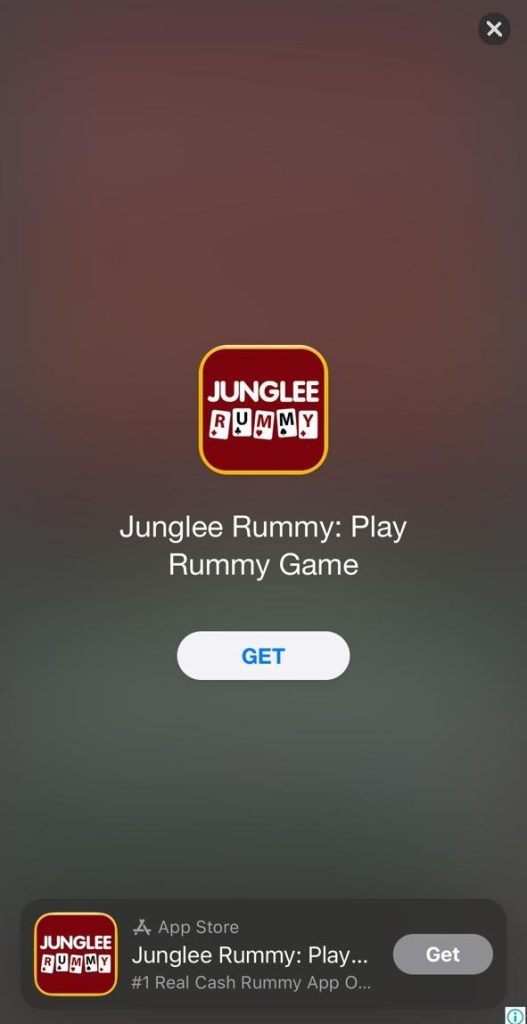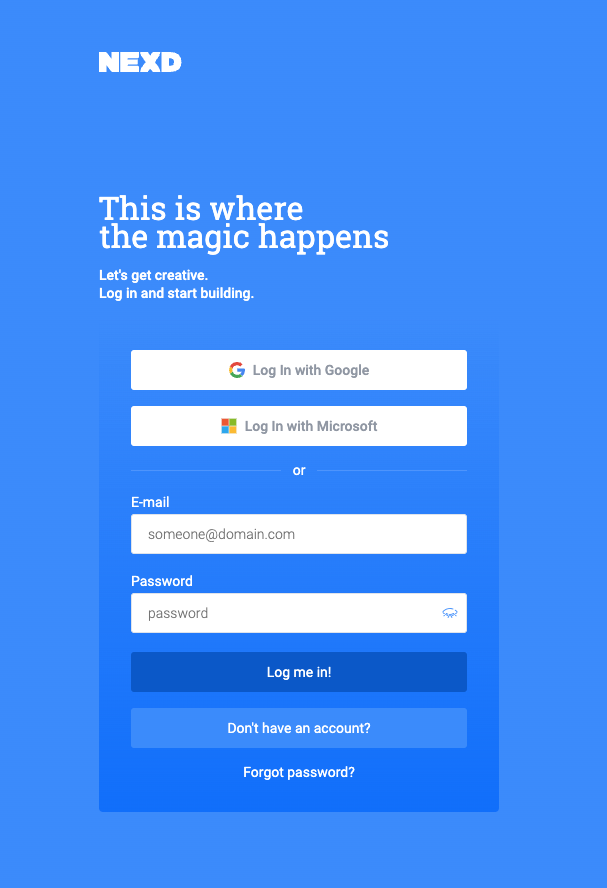What are Interstitial Ads and How Do They Work?
Numerous platforms integrate interstitial ads into their websites, landing pages, and app marketing plans to boost customer engagement. They’re the second most popular type of ads after those video ads that reward you.
Why do marketers like interstitial ads? They are bigger and more noticeable than regular banners. They’re like the billboards of mobile advertising. These ads appear at natural transition points within mobile apps, increasing the likelihood of catching a user’s attention.
This blog starts with the basics, explaining what “interstitials” mean and offers some tips on how to use them correctly.
What are interstitial ads?
They are full-screen advertisements between content transitions or navigational moments within an app or website.
They often appear as full-screen pop-ups, overlays, or modal windows and can include various types of content, such as images, videos, animations, or interactive elements.
Users see them after reading an article or completing a game level. They capture the user’s attention and encourage engagement with the advertised content.
Look at examples of this ad type here.
Why use interstitial ads?
Interstitial ads are a great way to boost your ad visibility and engagement. Their CTRs can be around 0.50% to 1.50%, with higher engagement potentially due to the ad’s larger size and immersive nature.
Let’s look at how they can benefit you:
- Interstitial ads have high visibility as they cover the entire screen. This leads to maximum visibility and exposure to users.
- These ads support various types of rich media content, including images, videos, animations, and interactive elements.
- Due to their prominent placement and engaging content, they often have higher click-through rates than other ad formats. Users are more inclined to interact with an ad that occupies the entire screen and offers compelling content.
- These offer publishers and app developers a lucrative monetization opportunity. Advertisers are often willing to pay premium rates for these high-impact interstitial ad placements, making interstitial ads a great revenue stream for content creators and platform owners.
- Publishers can present their users with a diverse ad experience by integrating new ad formats, thereby reducing “banner blindness” and increasing the effectiveness of their ads.
How do interstitial ads work?
Here’s a typical process of how such ads are served and displayed:
Integration: Publishers or app developers integrate an ad network’s software development kit (SDK) or ad code into their app or website. It allows the ad network to serve interstitial ads within the app or website.
User interaction: When a user performs an action that triggers a content transition or break, such as launching the app, navigating between screens or levels, or moving from one webpage to another, the ad network gets notified.
Ad request: The app or website sends an ad request to the ad network that provides information about the user, device, location, and context.
Ad selection: The ad network selects an appropriate interstitial ad from its inventory based on the provided information and the advertiser’s targeting criteria, such as demographics, interests, or behavioral data.
Ad rendering: The selected interstitial ad is rendered and displayed as a full-screen overlay, temporarily covering the app’s or website’s content.
User engagement: The user views or interacts with the interstitial ad before being able to dismiss it or proceed to its intended content. This interaction includes watching a video, engaging with interactive elements, or clicking a call-to-action button.
Ad dismissal: After a predetermined time or user interaction, the interstitial ad will display a “close” or “skip” button, allowing the user to dismiss the ad and return to the app’s or website’s content.
Tracking and reporting: The ad network tracks user interactions with the interstitial ad, such as impressions, clicks, conversions, and engagement metrics, and reports this data to the advertisers and publishers.
Banner Ads vs. Interstitial Ads
Many people often find themselves confused between banner ads and interstitial ads, two common forms of digital advertising.
While they share some similarities, there are distinct differences in appearance, placement, and user experience. To better understand these ad formats, let’s compare them in a tabular format:
| Aspect | Banner ads | Interstitial ads |
| Format | Small rectangular ads are displayed within the content. | Full-screen ads that appear between content. |
| Size | Various standard sizes (e.g., 728×90, 300×250) | Cover the entire screen, often with multimedia elements |
| Placement | Embedded within web pages or app interfaces | Displayed during app launches, level transitions, etc. |
| Visibility | Passive. It can be overlooked or ignored | Highly visible, as they cover the entire screen. |
| Engagement | Lower engagement rates compared to interstitials. | Higher engagement due to immersive experience. |
| Pricing | Usually priced based on impressions or clicks | Often priced at higher rates due to impact |
| Use cases | Brand awareness, contextual advertising | App installs, product promotions, conversions |
Real-life examples of impactful interstitial advertising
Interstitial ad units offer different kinds of ads:
- Text ads: Short and simple messages.
- Image and rich media ads: Pictures or interactive elements.
- Mobile video interstitial ads: Moving pictures with sound.
If there’s no interstitial video, users can close the ad immediately. However, interstitial video ads have a delay of up to 5 seconds before users can close them. This allows users to watch some of the video before deciding whether to close it.
Mobile interstitial ads

Mobile apps often use them to deliver targeted promotions, offers, or announcements to users at key moments, such as when they launch the app, navigate between screens, or interact with specific features.
It helps make they ads more acceptable and less intrusive.
Below is a mobile interstitial ad example.
Interstitial ads in gaming
Mobile and desktop gaming platforms have used interstitial ads to monetize their content while providing an immersive experience.
For example, after editing a video on Inshot, a gaming interstitial ad appeared. The ad’s immersive experience can draw viewers in while allowing them to try the game themselves.

These ads can appear during breaks in gameplay or at natural transition points.
Interstitial ads on websites
Websites incorporate interstitial ads to deliver targeted advertisements, promotions, or announcements to users as they navigate between pages or access specific content.
For instance, a sponsored ad appears on the desktop screen after visiting a site. It has maximum visibility as it covers the whole screen and passes the message.
Interstitial ads best practices
Follow these best ad practices to implement ads effectively.
Prioritize user experience
Interstitial ads work best when integrated into linear user experiences at natural stop and start points within the app. Ads should complement the app’s flow and not disrupt user actions. Strategically place ads before navigating to a new page or prompting user actions. This minimizes accidental clicks and improves user experience.
Industry guidelines and regulations
Familiarize yourself with Google’s industry guidelines and regulations for implementing interstitial ads, particularly for specific platforms or regions.
Ensure compliance with advertising policies, data privacy regulations, and user consent requirements.
Exit button accessibility
Make sure that interstitial ads have clear exit buttons from the start that allow users to close the ad easily. Inform the users about how long they need to view the ad before being able to close it, and options like skipping should be available where applicable.
Consider frequency and timing
Display ads during natural transition points, such as app launches, level transitions, or content breaks. Avoid showing interstitial ads too frequently, as it can frustrate users and lead to high abandonment rates.
Consider implementing frequency capping to limit the number of ads shown to a user within a specific time frame.
Penalties for mobile interstitial ads
The popularity of interstitial ads flooded users with disruptive advertising experiences. It includes sign-up forms, push notification requests and other intrusive campaigns.
To safeguard user experience and maintain industry standards, platform providers and advertising organizations have implemented specific guidelines.
Failure to comply with these guidelines can result in various penalties, such as:
App rejection or removal from app stores
Major app stores like Google Play and Apple App Store have guidelines for acceptable ad practices within apps. If your app shows interstitial ads in a disruptive manner, such as unexpectedly or during critical functions, it may be rejected or removed from the app store, impacting its visibility and distribution later.
Brand reputation damage
Excessive or poorly timed interstitial ads can negatively impact the user experience and damage your brand’s reputation. Users may associate your app or website with intrusive advertising practices, leading to negative reviews, low ratings, and decreased user acquisition and retention.
Ad account suspension or termination
Ad networks have strict policies around interstitial ad usage. Violating these policies by displaying intrusive or excessive interstitial ads can suspend or terminate your ad account, preventing you from monetizing your app or website through that network.
Create interstitial ads for your campaigns with Nexd
Interstitial ads can deliver high impressions, click-through, conversion, and revenue. However, the effects of ads on user experience and revenue can vary, presenting advantages and drawbacks. To make the most of these ads, businesses should carefully consider how often and when they display them to avoid overwhelming users.
By finding the right balance, advertisers can maximize their impact while keeping users happy.
If you want to get started with Interstitial ads, you can use Nexd. It is a creative management platform that allows users to build lightweight, cost-effective, and engaging programmatic rich media ads without complex HTML5 development. It makes the whole ad creation process more accessible and sustainable.

Get Started
Sign up to Nexd Campaign Manager for a free 14-day trial and start creating environment-friendly and highly engaging programmatic creatives!
